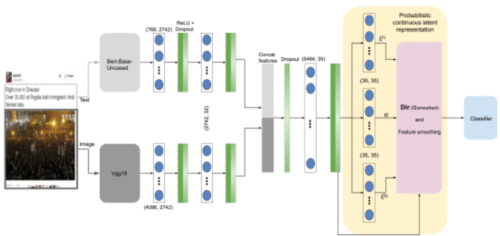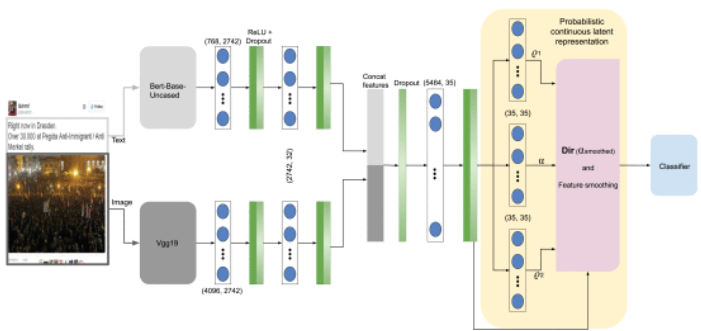2025-04-08 コンコルディア大学
<関連情報>
- https://www.concordia.ca/news/stories/2025/04/08/social-medias-fake-news-problem-is-the-target-of-a-new-tool-developed-at-concordia.html
- https://ieeexplore.ieee.org/document/10908402
SmoothDectector: ソーシャルメディア上のフェイクニュースに対抗するための平滑化ディリクレ多峰性アプローチ SmoothDectector: A Smoothed Dirichlet Multimodal Approach for Combating Fake News on Social Media
Akinlolu Oluwabusayo Ojo; Fatma Najar; Nuha Zamzami; Hanen T. Himdi; Nizar Bouguila
IEEE Access Published:28 February 2025
DOI:https://doi.org/10.1109/ACCESS.2025.3546876

Abstract
The rapid dissemination of fake news in the digital era has become a pressing concern. The ease of generating and manipulating fake content, including images, text, audio, and videos, has significantly fueled the spread of misinformation on social media platforms. These platforms often lack rigorous editorial scrutiny, exacerbating this problem. Although recent studies have explored multimodal fake news detection to learn shared representations of textual and visual information, they often learn discrete latent representations, merely concatenations of multimodal features. Simple concatenation or summation operations hinder the dynamic interaction of multimodal features. Furthermore, most models rely on additional subtasks, such as reconstruction and event discrimination. The performance of these models depends heavily on subtasks, which can be mathematically complex and time-consuming. This reliance limits the ability of researchers to explore different modeling assumptions freely. This study introduces a novel approach that integrates a probabilistic algorithm with a deep neural network to effectively capture the uncertainties and diversities in the shared latent representation of multimodal data. Specifically, our model utilizes continuous latent representations by leveraging a smoothed Dirichlet distribution, facilitating the identification of shared hidden patterns across textual and visual modalities. In addition, our model demonstrates the powerful properties of generative models when integrated with neural network models. Our results underscore the potential of integrating a probabilistic algorithm with a deep neural network to address the challenges of fake news detection in a multimodal setting. To support further research and reproducibility, we made the code related to this work publicly accessible.




